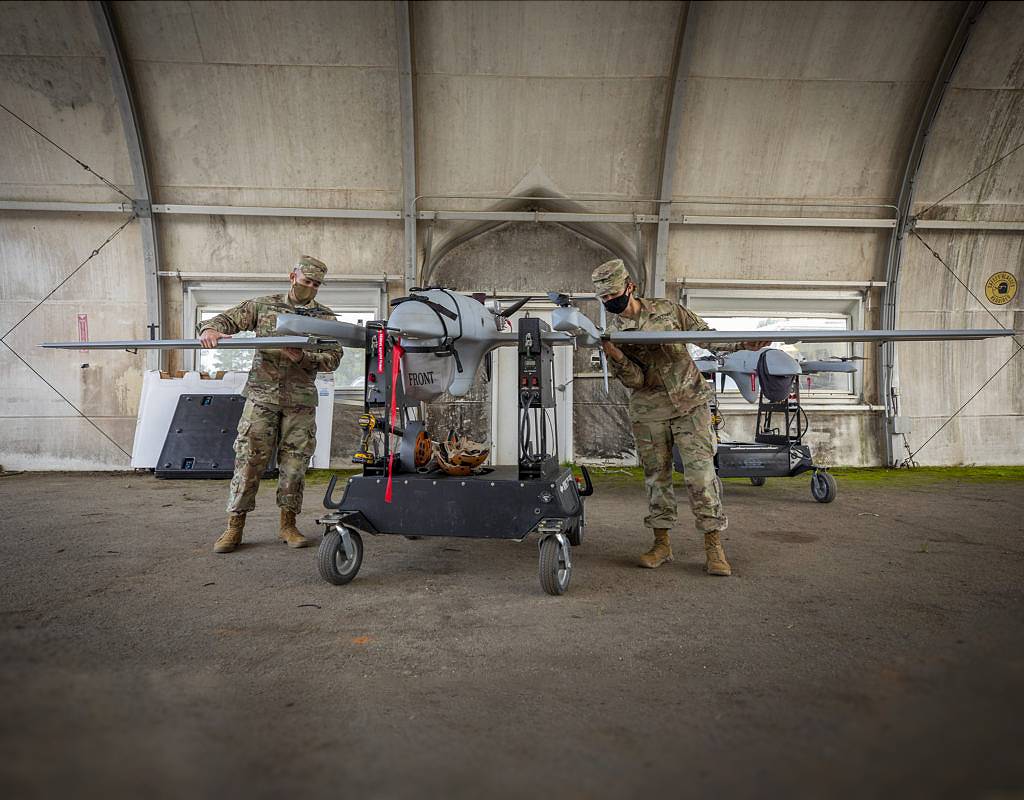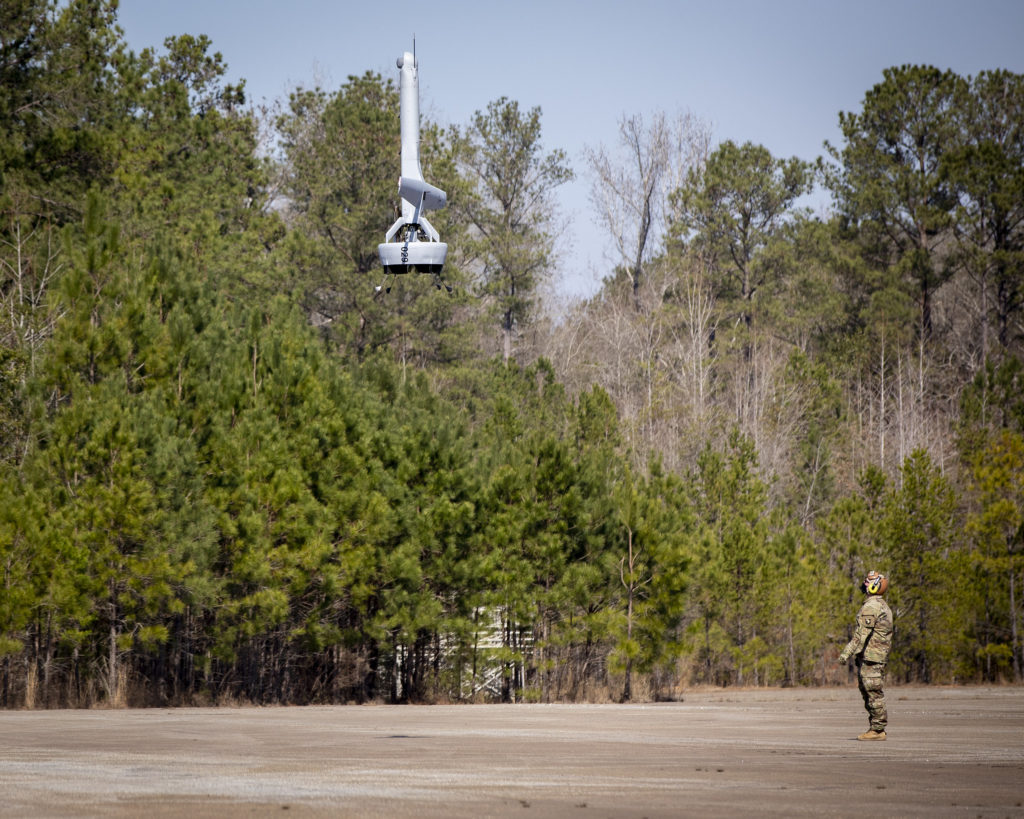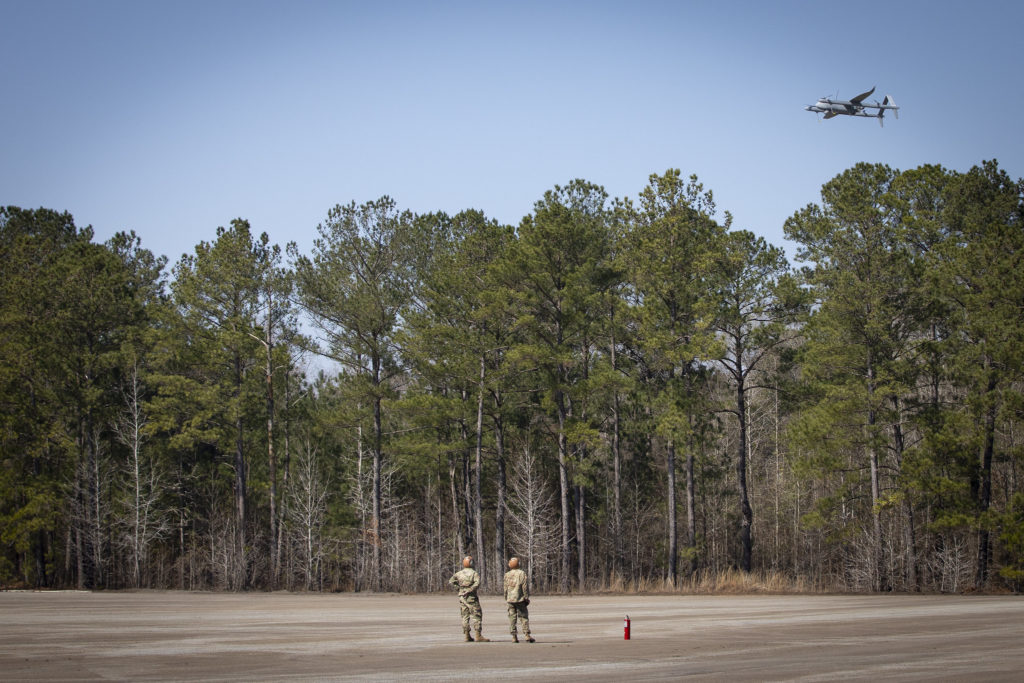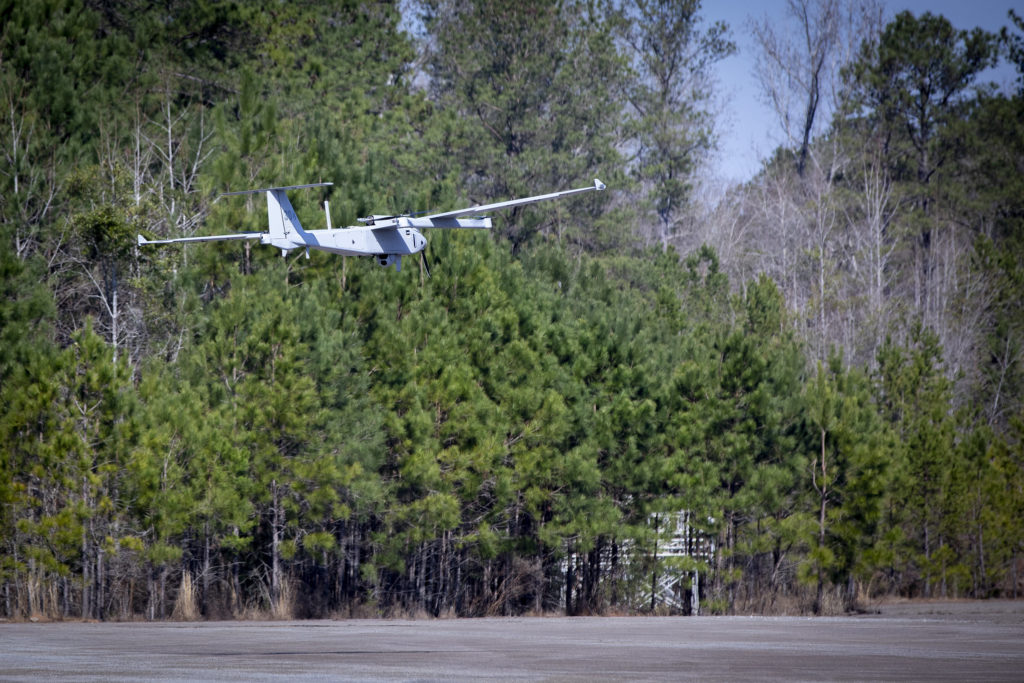
One after the other, four potential replacements for the Army’s RQ-7 Shadow drone wowed soldiers and their commanders during a flight demonstration in a chilly Georgia downpour that would have grounded the legacy drone.
“Hello from cold, wet, and dreary Fort Benning,” Brig. Gen. Walter Rugen, director of Future Vertical Lift at Army Futures Command, told reporters during a conference call on March 2. “Shadow could never fly in this type of moisture, couldn’t even come close.”

“All of these new form factors were able to fly in significant wet weather, significant rain,” Rugen added.
Facing off the four-way Future Tactical Unmanned Aerial System (FTUAS) “rodeo”, which began Feb. 22 and runs through March 5 at Fort Benning, Georgia, were the Arcturus Jump 20, L3 Harris’ FVR-90, the Martin V-BAT and the AAI Aerosonde HQ. Each was carted out into the inclement weather by members of a UAV platoon that had spent about three weeks training to fly them. All four then successfully made vertical launches, transitioned to horizontal flight to perform missions using onboard payload sensors, and returned to a predetermined landing point.
“Today we got a demonstration from each of the four vendors in less than ideal weather,” said Maj. Gen. David Francis, the Army’s chief aviator. “It was cold. It was raining and they all were able to launch, demonstrate the capabilities and recover each of their UAS systems successfully. This is exactly where we want to be in terms of our buy, try and inform strategy.”
Flying in rain wasn’t the only improvement these FTUAS hopefuls demonstrated over Shadow. Each of the four required fewer soldiers to set up and operate. They made less noise in flight that the legacy RQ-7 and, most importantly for the Army’s needs, they were able to take off, perform a mission and be recovered without a prepared runway.
Runway independence tops the Army’s requirements for FTUAS. Where Shadow requires a C-17 — or two and a half C-130s — for transport, the Army wants FTUAS to fit on a CH-47 Chinook, so that neither the drone system nor its battlefield transport requires a runway. Shadow has a 68-mile (109-kilometer) range, which the Army wants to match or improve upon with FTUAS. Finally, the Army wants a dramatically reduced acoustic signature in flight.
Francis and fellow Army aviation generals used words like “eclipses” and “transformational” to compare the four FTUAS contenders to Shadow, an unusual outpouring of praise before the Army has even nailed down its formal requirements.
“We saw all of that and more,” Rugen said. “We saw a very agile system from every performer and we saw the soldiers uniformly fall in love with this capability and want to keep it.”
All four platoons operating a FTUAS candidate were able to control their aircraft from a moving Humvee, Rugen said.
Command Sgt. Major Michael Crosby, the senior enlisted advisor to Army Futures Command, said that where the Shadow requires around 150 individual pre-flight checks, none of the four FTUAS systems required more than 70 tasks prior to getting airborne.

The “rodeo,” which runs Feb. 22 through March 5, was the culmination of intensive testing by five Army brigade combat teams (BCTs) during rotations at two of the nation’s combat training centers. As part of the Army’s “buy, try, inform” acquisitions strategy for swiftly evolving drone technology, soldier feedback based on those field trials will inform requirements the Army plans to finalize soon for a FTUAS to replace Shadow.
Even in the rain, Francis said all the drones demonstrated were “significantly quieter” than the Shadow. Rugen said operating crews noted how easily they could communicate during pre-flight engine checks because the aircraft created so little noise.
To launch a Shadow, “you have to have a ground control station,” Francis said. “You have to have a launcher. You have to have a runway to recover it. You have to have vehicles to move all of that equipment or to operate it. In this case, they’re all operating off tri-screen laptops that are very small in nature and mobile and you have two to three soldiers that are able to put these systems into operation.”

FTUAS eventually will operate in tandem — and likely be controlled by — other Future Vertical Lift vehicles like the Future Attack Reconnaissance Aircraft (FARA). The Army also wants its new scout drone to be an “air-launched effect,” or ALE, meaning it should be deployable from a helicopter mid-air.
Brig. Gen. Robert Barrie, program executive officer for aviation, said the tests were a “significantly positive bellwether as we go forward with this requirement and eventually field this system to our soldiers. There is no doubt it will be well received.”
Asked if the Army could buy more than one of the systems tested, so enamored with them as soldiers were, Barrie said “yes… that is an option.”
“I believe that will be a desire of the Army, but I don’t want to get ahead of that,” Barrie added. “What we will commit to is we will leverage to the greatest extent possible, in the same way we have thus far, the acquisition authorities that we have, in the most flexible manner to most rapidly deliver this capability by whatever means we can, based on available resources.”



